Originally posted on GidMK; Health Nerd
At the outset I’d like to mention that I’m not the owner of a uterus, and so don’t have the same personal stake in the provision of abortion as someone who is.
Donald Trump recently celebrated his inauguration by re-implementing the global gag rule, a 1984 ruling that denies US funding for any organisation that supplies any information whatsoever on abortion worldwide. This includes referrals for services, or even just pamphlets with options. Abortion is a subject that affects women worldwide, and for International Women’s Day it’s particularly important that we take a look at what it really means.
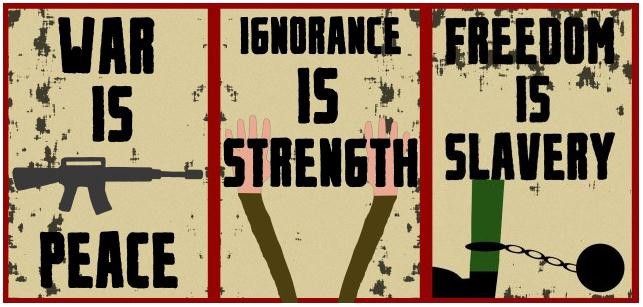
Not to be confused with 1984 laws, from the novel by George Orwell
There’s a lot of debate about abortion.
I’m sure you’ve noticed.
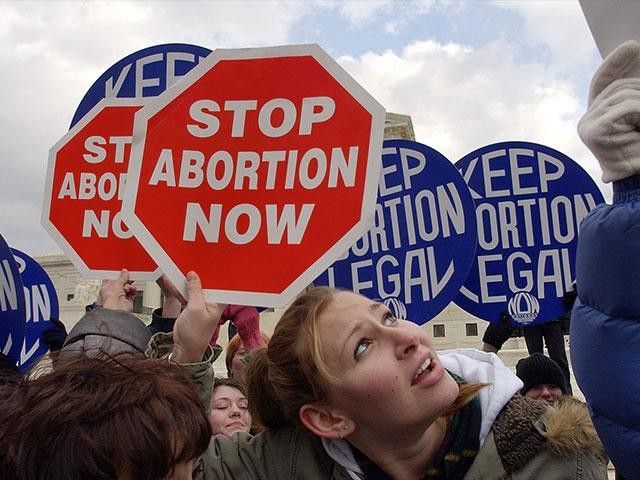
Debate; best done with signs
The arguments usually center around 2 ideas; whether it is a human right to choose what happens to your body, and whether a fetus should count as a human being.
These debates are stupid.
I’m not saying the arguments are bad (although arguing that a few cells in a uterus should have the same rights as an adult person…well), I’m saying that policy shouldn’t be decided based on ideology. We don’t base economic decisions on what we ‘feel’ about a subject. We put our money into what we think will actually work.
Arguing about whether providing easily accessible abortion is ethical completely ignores the real question; “which approach works?”. Does banning abortion reduce the rate of abortions, save lives, and encourage people to have babies? What happens when women can’t access abortion easily?
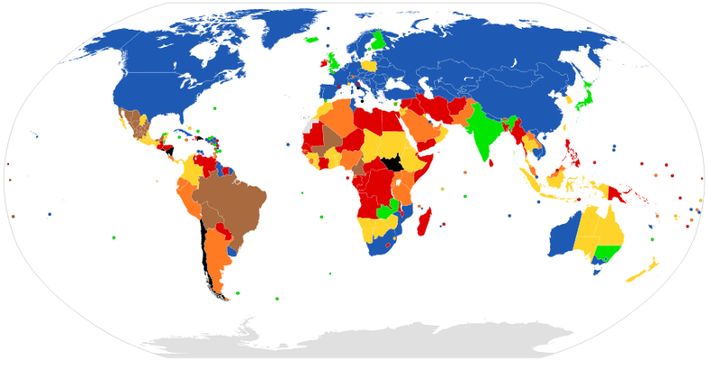
Blue=legal, green=semi-legal, yellow=restricted, brown=very restricted, orange=extremely restricted, red=almost fully restricted, black=completely illegal (source)
I can’t answer the deeper ethical questions. They may in fact be unanswerable. But there’s a lot of evidence about what works and what doesn’t.
Banning Abortion Doesn’t Change Abortion Rates
First things first. There’s global evidence that banning abortion does very little to lower abortion rates.
If you look at the picture above, you’ll notice that there’s a lot of brown and red in South America and Africa. This is because many of these countries have laws that either make it extremely difficult to access abortion, or just ban it altogether.
They also have significantly higher rates of abortion than the world average.
So places that ban (or significantly limit) abortion actually have higher rates than those that make it freely accessible.

Really makes you think...
There’s more; a study on state-level restrictions on abortion in the US found that these were largely ineffective at reducing the number of abortions taking place. Another study in Texas found that the closing of half of the abortion clinics in the state resulted in women travelling interstate to access services or using other methods to access abortions.
It’s almost as if there are actual reasons that women get abortions that abortion bans don’t address.
That brings us neatly to…
Better Contraception DOES Change Abortion Rates
Banning abortion is like prohibition; messy, useless, drives the trade underground. Contraception is like good alcohol regulation; it prevents the problem from happening in the first place.

In a shocking twist, preventing unwanted pregnancies prevents people terminating their unwanted pregnancies. Quelle surprise!
Analysis conducted by the WHO has found that increased contraceptive use has resulted in a worldwide reduction in abortion rates. Countries such as Turkey, Tunisia and Switzerland all saw a big drop in their abortion rates when contraceptive use increased.
This makes perfect sense. There are 80 million unintended pregnancies each year worldwide. 60% of these end in abortion. If you reduce the number of unintended pregnancies, you reduce the number of abortions. The WHO has estimated that proper provision of contraceptives could reduce the number of abortions by up to 90%.
Unsafe Abortion Kills
47,000.
And the scariest part is that death from unsafe abortion is actually quite rare. The most common complications are painful, horrifying and potentially crippling, but often not fatal.
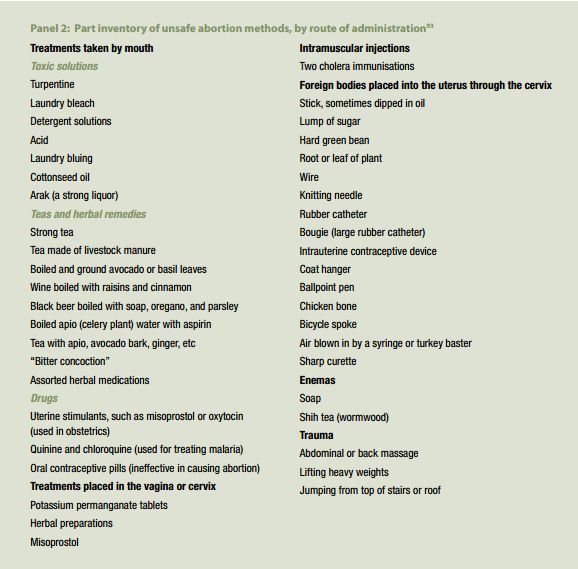
Can’t access abortion? You might have to jump off a roof.
Most of these unsafe abortions take place in developing nations, in particular South America and Africa. In fact, countries that ban or severely limit abortion are much more likely to see high rates of unsafe abortion than countries which don’t.

Pictured; me beating the point to death because it’s super fucking important
Providing safe abortion services and good access to contraception is associated with massive drops in the rate of unsafe abortion. It’s a simple, easy way to save thousands of lives.
If it seems like I’m repeating myself, it’s because this is not complicated or difficult. Public health experts have been screaming this for decades. And yet, we still see groups of men signing in legislation that will kill thousands and maim millions more.
And can you guess the two things that reduce rates of unsafe abortions?
If you thought “easy access to abortion and contraception”, you’re both right and clearly able to read.
Unsafe abortion is the leading cause of maternal mortality worldwide, causing 13% of all maternal deaths. In a shocking twist, these largely happen in countries with extremely limited access to safe abortion.
Desperation. Fear. These are the words that describe unsafe abortion. No one willingly drinks bleach unless they absolutely have to. And yet 21 million women each year have an unsafe abortion because the place they live denies them access to a safer alternative.
47,000 of them die.
Global Gag Rule
So what does a new administration do in the face of overwhelming evidence that safe abortion and contraceptive access are the best ways to save women’s lives and prevent abortion?
They eliminate aid for any service that “promote” any abortion services. Even using their own funds. Even if they just provide information to women who ask.
In some places, this represents an annoyance. US foreign aid doesn’t contribute much (if at all) to a country like Australia. But in places like Nepal, where a large percentage of women’s health services are US-funded, the global gag rule causes enormous problems.
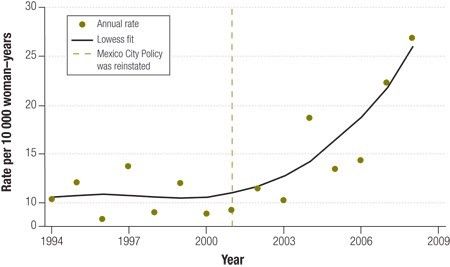
Abortion rates before and after the Global Gag Rule was implemented
Last time the global gag rule was enforced, women in developing countries lost access to contraception, counselling, and safe abortions. As a result, abortion rates skyrocketed, particularly unsafe abortions.
It’s chilling, it’s monstrous, and it’s entirely preventable.
Light at the End of the Tunnel?
Fortunately, not every country makes decisions based on the desires of a self-important cheezel.
The Netherlands recently announced that they would set up an international fund to provide birth control and abortions to developing countries. People internationally are standing up for the provision of safe care for women.
There aren’t any easy fixes. This problem isn’t going to go away.
So do something.
Donate. Rally. Write letters. And because it’s incredibly important, donate*. The global gag rule will leave millions of women without proper healthcare. Thousands will die without access to these vital services. We can make a difference in all of their lives.
It’s going to be a long 4 years, but there is light at the end of the tunnel.
*I’ve linked to DKT International, a group that funds contraceptive and abortion services to developing countries. There are other good charities out there. If you know of any, leave a comment and I’ll add it to the list.
